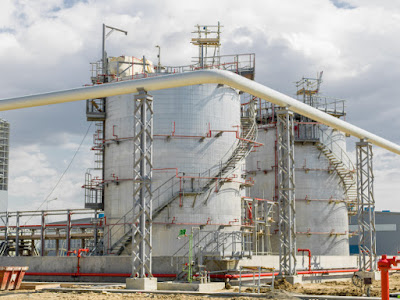What is Steel Fabrication? Metal fabrication is the production of metal structures by manually manipulating, cutting, and welding processes. It's a value-added process involving the production of mechanical parts, machines, and other structures out of different raw materials. Steel is one of the most commonly used materials in the construction industry. There are various applications for it like air-conditioners, generators, ships, automobiles, bridges, and many more. Steel Fabrication involves various processes such as welding, cutting, punching, sawing, broaching, grinding, and sanding.

Steel fabricators use a variety of techniques including bending, rolling, sawing, riveting, and bending. These techniques enable the fabrication of beams, columns, bolted structures, pipe fittings, floor systems, and even automobiles. The components are produced on the basis of pre-existing designs or brand new designs that can be produced to match the design and specification of the client.
Steel Fabrication also includes different forms of machining such as drilling, boring, cutting, turning, broaching, welding, cutting, sewing, and fastening. Welded pieces are produced by using the latest welding technology. Steel Fabrication plants are increasingly growing in number across the world. Many companies seek the services of these welding fabricators for fabrication welding and repair of complex metal fabrication work. These companies require expert manpower and advanced tools to manufacture and fine-tune steel components.
Steel fabricators offer quality services to their clients. They help their clients in making custom products to suit their needs. Most of these fabrication units manufacture welding and cutting machines. For high-volume production, they take the help of CNC (Computer Numerated Control) machining and plasma cutting machines. For a custom home, business, or industrial furnishing, steel fabrication and fabricating companies provide seamless solutions with cutting-edge technology and state-of-the-art equipment.
Steel fabricators make use of a variety of advanced tools and techniques for superior performance. Some of these include laser cutting systems, plasma cutting systems, etc. These fabricators even offer welding services to their customers. They can also offer precision machining services at nominal rates. Some of the popular types of products fabricated by these machining and welding units are auto parts, valves, pumps, connectors, lifts, switches, racks, pipes, cables, switches, air conditioners, mounts, wheels, gears, racks, panel doors, tool boxes, switches, gaskets, seals, etc.
In addition to all the above-mentioned products, many construction companies and engineering Bodies use Steel Fabrication to manufacture various products. For instance, water jet cutting torches are used for cutting hard-to-reach areas which are otherwise very difficult to cut through with other cutting torches. Water jet cutting torches have unique features like adjustable heat settings and self-cleaning features. They are preferred by a lot in marine fabrication industries, aerospace, and structural steel shops.
Read More: What Are The Advantages & Disadvantages Of Steel Structures?
View More: Promec Engineering Pty Ltd




















